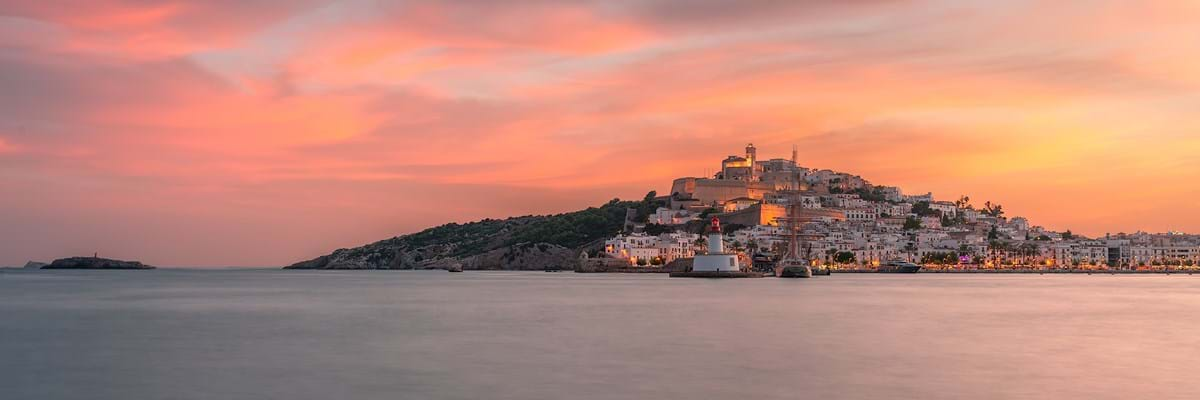A fortified town where history comes alive
A port that loves to party is crowned by a gorgeous old town full of winding cobblestoned lanes and ancient buildings that help to tell the story of Ibiza’s fascinating and long history.
But because it’s Ibiza Town, the island’s big, buzzing capital, this charming old quarter has a contemporary touch with stylish shops, art galleries and lovely restaurants in the maze of courtyards and lanes.

It’s called Dalt Villa, which means High Town rather than old town, but both names are appropriate. Its hillside setting dominates the town and its history dates back about 2,500 years to when the Phoenicians took over the island – the first of many invaders.
The Romans, Italians, French, Moors and even the Vikings spent time in Ibiza before Spain claimed it. The still-magnificent walls that fortify Dalt Villa were built in the 16th century when the Turks and the French were queuing up to invade what was then an immensely wealthy town. The walls also helped keep the pesky pirates at bay.
Visitors get a taste of the treasure trove of history as soon as they cross the stone drawbridge and enter the main square, a cobbled courtyard that was there long before the shops and restaurants invaded. It becomes easy to appreciate why Dalt Villa is a Unesco world heritage site. See more UNESCO heritage sites in this blog post.

Guided tours are available and free route maps can be obtained at the tourist office (there is an English version) but many visitors prefer to roam around. Terraces, battlements, balconies, a monastery, museums and a cathedral are crammed into the fortification - as well as the shops and restaurants.
There is a steep climb to the Roman Catholic Cathedral to Our Lady of the Snows perched at the top of the hill where the panoramic views of the town, sea and nearby island of Formentera are spectacular. The cathedral dates back to the 13th century.
Much of the intriguing history can be found in the Archaeological Museum and a lane leading up to the cathedral hides one of the most dramatic moments. It’s a secret tunnel that enabled Catalan soldiers to creep into the castle and defeat the occupying Moors on August 8, 1235.
A chapel was built over the tunnel entrance and dedicated to San Ciraico, the patron saint. Each year a week-long festival culminates with a huge firework display at midnight on August 8 to honour the saint and remember the day that Christianity returned to Ibiza.
Date last updated:



